Missile Command
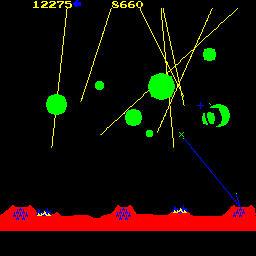 Atari scores a direct hit on arcades everywhere with Missile Command, a game which reminds video game-obsessed youth that the Cold War is still on. (In the months it takes to develop the game, programmer Dave Theurer has recurring nuclear-war-themed nightmares.) Cementing the trakball as a viable controller for fast-paced, non-sports games, Missile Command inspires a popular home video game cartridge (which, in the interest of not giving young gamers nightmares, dispenses with the Cold War theme in favor of a science-fiction explanation of the missiles’ origin).
Atari scores a direct hit on arcades everywhere with Missile Command, a game which reminds video game-obsessed youth that the Cold War is still on. (In the months it takes to develop the game, programmer Dave Theurer has recurring nuclear-war-themed nightmares.) Cementing the trakball as a viable controller for fast-paced, non-sports games, Missile Command inspires a popular home video game cartridge (which, in the interest of not giving young gamers nightmares, dispenses with the Cold War theme in favor of a science-fiction explanation of the missiles’ origin).
More on Missile Command in Phosphor Dot Fossils
Hear about it on the Sci-Fi 5 podcast
Space Invaders invade homes
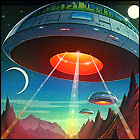 Atari releases the home version of Space Invaders as a cartridge for the Atari 2600, the first time that a video game company has licensed another company’s game for home play. (All of Atari’s arcade ports up to this point have been home versions of Atari arcade games.) It turns out to be an astute move: Space Invaders is the “killer app” of the VCS, becoming so popular that the cartridge boosts sales of the system needed to run it.
Atari releases the home version of Space Invaders as a cartridge for the Atari 2600, the first time that a video game company has licensed another company’s game for home play. (All of Atari’s arcade ports up to this point have been home versions of Atari arcade games.) It turns out to be an astute move: Space Invaders is the “killer app” of the VCS, becoming so popular that the cartridge boosts sales of the system needed to run it.
More about Atari 2600 in Phosphor Dot Fossils
Hear about it on the Sci-Fi 5 podcast
Mystery House
 Sierra On-Line releases its first computer game, Hi-Res Adventure #1: Mystery House, for the Apple II computer. Pairing simple text descriptions with even simpler line art, the game marks a turning point in computer adventure games, and sets Sierra on a course to become one of the best-selling game software houses of the ’80s.
Sierra On-Line releases its first computer game, Hi-Res Adventure #1: Mystery House, for the Apple II computer. Pairing simple text descriptions with even simpler line art, the game marks a turning point in computer adventure games, and sets Sierra on a course to become one of the best-selling game software houses of the ’80s.
Intellivision introduced
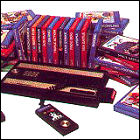 After over a year of play testing and preparation, Mattel Electronics launches the first major competitor to the market-dominating Atari VCS video game console: Intellivision (short for “Intelligent Television”). Boasting superior graphics and a library of the first-ever licensed sports titles (though licensed by various pro sports leagues, rather than by specific teams or individuals), Intellivision is well-poised to enter a market where sports games are all-important.
After over a year of play testing and preparation, Mattel Electronics launches the first major competitor to the market-dominating Atari VCS video game console: Intellivision (short for “Intelligent Television”). Boasting superior graphics and a library of the first-ever licensed sports titles (though licensed by various pro sports leagues, rather than by specific teams or individuals), Intellivision is well-poised to enter a market where sports games are all-important.
Activision founded
 Fed up with Atari’s refusal to grant them bylines on the best-selling games they’ve been designing and programming for the Atari VCS, Atari employees Alan Miller, David Crane, Larry Kaplan and Bob Whitehead quit their jobs and form the first third-party video game software house, Activision, with former music executive Jim Levy aboard as the new company’s CEO. Infuriated, Atari files a raft of lawsuits alleging theft of trade secrets, but is ultimately unable to get an injunction preventing Activision from releasing games for the VCS.
Fed up with Atari’s refusal to grant them bylines on the best-selling games they’ve been designing and programming for the Atari VCS, Atari employees Alan Miller, David Crane, Larry Kaplan and Bob Whitehead quit their jobs and form the first third-party video game software house, Activision, with former music executive Jim Levy aboard as the new company’s CEO. Infuriated, Atari files a raft of lawsuits alleging theft of trade secrets, but is ultimately unable to get an injunction preventing Activision from releasing games for the VCS.
War Of Nerves
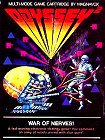 Magnavox releases the video game cartridge War Of Nerves for the Odyssey2 video game system, designed and programmed by Ed and Linda Averett. With an emphasis on giving orders to a robot army not directly under the player’s micro-managed control, this may be the earliest example of a real-time strategy video game.
Magnavox releases the video game cartridge War Of Nerves for the Odyssey2 video game system, designed and programmed by Ed and Linda Averett. With an emphasis on giving orders to a robot army not directly under the player’s micro-managed control, this may be the earliest example of a real-time strategy video game.
Lunar Lander
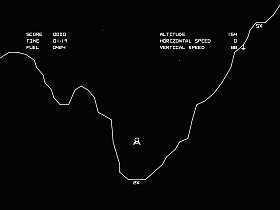 Some ten years after the real thing put men on the moon, Atari invites arcade space pilots to try their own luck at the controls of the Lunar Lander. A tricky, brainy game based on real physics, requiring players to cancel out unwanted motion in two axes without running out of fuel, the results are perhaps a little too real: quite a few vector-graphic Eagles fail to land in one piece, and quite a few disgruntled pilots don’t come back to try again.
Some ten years after the real thing put men on the moon, Atari invites arcade space pilots to try their own luck at the controls of the Lunar Lander. A tricky, brainy game based on real physics, requiring players to cancel out unwanted motion in two axes without running out of fuel, the results are perhaps a little too real: quite a few vector-graphic Eagles fail to land in one piece, and quite a few disgruntled pilots don’t come back to try again.
Warrior
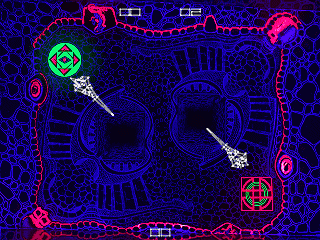 Cinematronics gives arcade players the chance to fall on their swords – or their opponent’s sword – in the first-ever head-to-head fighting video game, Warrior. Combining the company’s “Vectorbeam” vector graphics with a brilliantly colorful backdrop illuminated by blacklight, Warrior is a feast for the eyes and becomes an arcade cult classic.
Cinematronics gives arcade players the chance to fall on their swords – or their opponent’s sword – in the first-ever head-to-head fighting video game, Warrior. Combining the company’s “Vectorbeam” vector graphics with a brilliantly colorful backdrop illuminated by blacklight, Warrior is a feast for the eyes and becomes an arcade cult classic.
Superman
 Atari releases Superman as a cartridge for the Atari 2600. This is the first major synergy between Atari and fellow Warner Communications unit DC Comics, riding on the renewed interest in the character generated by the 1978 movie.
Atari releases Superman as a cartridge for the Atari 2600. This is the first major synergy between Atari and fellow Warner Communications unit DC Comics, riding on the renewed interest in the character generated by the 1978 movie.
More about Atari 2600 in Phosphor Dot Fossils
Hear about it on the Sci-Fi 5 podcast
Basketball
 Atari releases the two-player arcade game Basketball, which features one of the earliest instances of a basketball court drawn in a vaguely 3-D perspective. Like its Football predecessor from Atari, Basketball uses dual trackball controllers.
Atari releases the two-player arcade game Basketball, which features one of the earliest instances of a basketball court drawn in a vaguely 3-D perspective. Like its Football predecessor from Atari, Basketball uses dual trackball controllers.
Take The Money And Run!
 Magnavox releases the video game cartridge Take The Money And Run! for the Odyssey2 video game system, designed and programmed by Ed and Linda Averett. This is a two-player maze game that predates Pac-Man.
Magnavox releases the video game cartridge Take The Money And Run! for the Odyssey2 video game system, designed and programmed by Ed and Linda Averett. This is a two-player maze game that predates Pac-Man.
Odyssey2
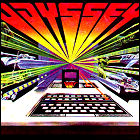 Having originally announced a programmable video game console in 1977 before almost cancelling the project, Magnavox launches its first cartridge-based video game console, the Odyssey2. Though intended to compete with the Atari VCS, the Odyssey2 is at a disadvantage thanks to its underpowered Intel processor and a limited graphics set.
Having originally announced a programmable video game console in 1977 before almost cancelling the project, Magnavox launches its first cartridge-based video game console, the Odyssey2. Though intended to compete with the Atari VCS, the Odyssey2 is at a disadvantage thanks to its underpowered Intel processor and a limited graphics set.
Slot Machine
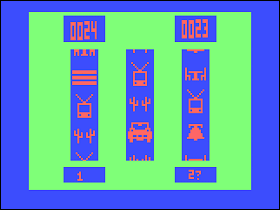 Atari releases the Slot Machine cartridge for the Atari VCS, designed and programmed by future Pitfall! programmer David Crane.
Atari releases the Slot Machine cartridge for the Atari VCS, designed and programmed by future Pitfall! programmer David Crane.
Football
 Atari releases the two-player arcade game Football, a refined version of an internal project called Xs and Os that has been in development for some time. Though it’s a well-executed basic football game, Football’s real innovation is its trackball controller, giving players fluid analog control over their onscreen counterparts.
Atari releases the two-player arcade game Football, a refined version of an internal project called Xs and Os that has been in development for some time. Though it’s a well-executed basic football game, Football’s real innovation is its trackball controller, giving players fluid analog control over their onscreen counterparts.
Space Wars
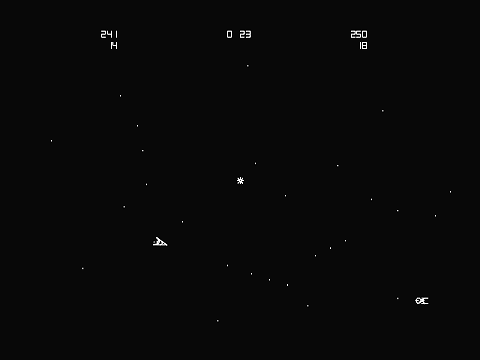 Cinematronics introduces the first vector graphics arcade game, Space Wars, designed and programmed by Larry Rosenthal, using Rosenthal’s “Vectorbeam” technology. The game is based on the 1960s mainframe game Spacewar!. The high-resolution vector graphics technology, which offers better graphics (at the cost of limiting them to black & white displays), becomes an arcade mainstay as other manufacturers such as Atari and Sega begin using similar displays.
Cinematronics introduces the first vector graphics arcade game, Space Wars, designed and programmed by Larry Rosenthal, using Rosenthal’s “Vectorbeam” technology. The game is based on the 1960s mainframe game Spacewar!. The high-resolution vector graphics technology, which offers better graphics (at the cost of limiting them to black & white displays), becomes an arcade mainstay as other manufacturers such as Atari and Sega begin using similar displays.
Space Invaders
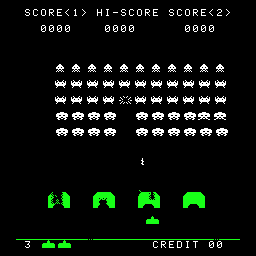 After its introduction in June in Japan, Space Invaders is introduced to the United States by Midway Manufacturing. Its space-war-themed action arrives just in time to cash in on the public’s fascination with space and science fiction, making it a major hit (the game is already well on its way to causign coin shortages in its native Japan). In America, it pushes the arcade video game industry into high gear, priming both the industry and the public for the boom years ahead. Space Invaders‘ success also convinces Taito to start an American operation rather than continuing to license its arcade games to Midway.
After its introduction in June in Japan, Space Invaders is introduced to the United States by Midway Manufacturing. Its space-war-themed action arrives just in time to cash in on the public’s fascination with space and science fiction, making it a major hit (the game is already well on its way to causign coin shortages in its native Japan). In America, it pushes the arcade video game industry into high gear, priming both the industry and the public for the boom years ahead. Space Invaders‘ success also convinces Taito to start an American operation rather than continuing to license its arcade games to Midway.
Basketball
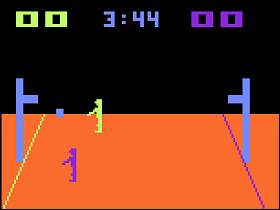 Atari releases the Basketball cartridge for the Atari VCS, one of the earliest home video games to show a vaguely 3-D perspective, and probably the best-known early sports game in the console’s library.
Atari releases the Basketball cartridge for the Atari VCS, one of the earliest home video games to show a vaguely 3-D perspective, and probably the best-known early sports game in the console’s library.
No love for Studio II
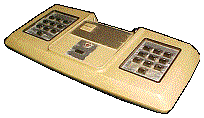 Just before Valentine’s Day, RCA kills its Studio II home video game console, whose blocky black & white graphics and library of “edutainment” cartridges have proven to be no competition for the more game-oriented, full-color consoles from Fairchild and Atari over the previous two Christmas shopping seasons. 120 employees directly involved with developing for or assembling the Studio II and related products are laid off from RCA’s facility in Swannanoa, North Carolina as a result. The company makes no further attempts to break into the video game business.
Just before Valentine’s Day, RCA kills its Studio II home video game console, whose blocky black & white graphics and library of “edutainment” cartridges have proven to be no competition for the more game-oriented, full-color consoles from Fairchild and Atari over the previous two Christmas shopping seasons. 120 employees directly involved with developing for or assembling the Studio II and related products are laid off from RCA’s facility in Swannanoa, North Carolina as a result. The company makes no further attempts to break into the video game business.
The Video Computer System
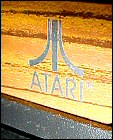 The Atari Video Computer System, model number CX2600, hits retail stores in the United States, primarily through a deal with Sears (which has a contractual right to repackage it as the Sears Video Arcade). Packaged with two joysticks, a pair of paddles, and the two-player-only tank game Combat, the VCS isn’t quite a runaway success, with only a quarter million units selling by Christmas 1977.
The Atari Video Computer System, model number CX2600, hits retail stores in the United States, primarily through a deal with Sears (which has a contractual right to repackage it as the Sears Video Arcade). Packaged with two joysticks, a pair of paddles, and the two-player-only tank game Combat, the VCS isn’t quite a runaway success, with only a quarter million units selling by Christmas 1977.
Bally Professional Arcade
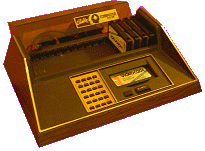 Bally introduces the Bally Professional Arcade home video game system, based on some of the same technology that Bally and its Midway division have been using in arcade games. This means the Bally Professional Arcade is perfectly suited to home versions of such Midway coin-ops as Space Zap and Wizard Of Wor – possibly the earliest instance of real arcade fidelity in a home game system. Its tiny keypad also allows Bally to claim that the Professional Arcade is a home computer waiting to happen.
Bally introduces the Bally Professional Arcade home video game system, based on some of the same technology that Bally and its Midway division have been using in arcade games. This means the Bally Professional Arcade is perfectly suited to home versions of such Midway coin-ops as Space Zap and Wizard Of Wor – possibly the earliest instance of real arcade fidelity in a home game system. Its tiny keypad also allows Bally to claim that the Professional Arcade is a home computer waiting to happen.
More about Bally Professional Arcade in Phosphor Dot Fossils
Fairchild Channel F
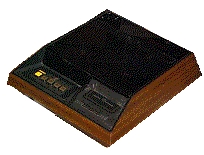 Fairchild rebrands its pioneering Video Entertainment System console as the much more memorable Fairchild Channel F. This is the name by which the console will be most commonly known in the future, and a name which it retains even after Fairchild sells its inventory and interest in Channel F to electronic toolmaker Zircon in 1979. Many later historical accounts associate the Channel F rebranding with competition and market confusion from Atari’s Video Computer System, but in fact the VCS won’t debut until much later in the year.
Fairchild rebrands its pioneering Video Entertainment System console as the much more memorable Fairchild Channel F. This is the name by which the console will be most commonly known in the future, and a name which it retains even after Fairchild sells its inventory and interest in Channel F to electronic toolmaker Zircon in 1979. Many later historical accounts associate the Channel F rebranding with competition and market confusion from Atari’s Video Computer System, but in fact the VCS won’t debut until much later in the year.
RCA Studio II
 Launched just prior to Christmas 1976 (so late, in fact, that most consumers aren’t aware of its existence until early ’77), RCA takes its only step into the video game world with the underpowered Studio II console. With its black-and-white graphics and all-in-one design forcing both players to sit directly in front of the console, Studio II is behind the times from the moment it’s introduced, despite being the second cartridge-based programmable video game (or, as RCA labels it, “television programmer”) to hit the market. Studio II fails to make a significant dent in the sales of Fairchild’s Video Entertainment System – the dominant cartridge-based game of the day – and RCA retreats from the video game business in just 14 months.
Launched just prior to Christmas 1976 (so late, in fact, that most consumers aren’t aware of its existence until early ’77), RCA takes its only step into the video game world with the underpowered Studio II console. With its black-and-white graphics and all-in-one design forcing both players to sit directly in front of the console, Studio II is behind the times from the moment it’s introduced, despite being the second cartridge-based programmable video game (or, as RCA labels it, “television programmer”) to hit the market. Studio II fails to make a significant dent in the sales of Fairchild’s Video Entertainment System – the dominant cartridge-based game of the day – and RCA retreats from the video game business in just 14 months.
Starship 1
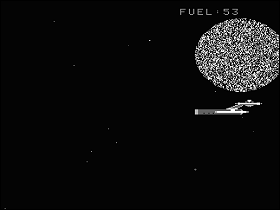 One of the very first first-person space games is introduced to arcades by Atari. Despite its flickery graphics, Starship 1 gives would-be space heroes the chance to take aim at the bad guys; perhaps showing the enduring power of a certain science fiction series, Starship 1’s friendly ships look suspiciously like the U.S.S. Enterprise, while its enemy targets look somewhat like Klingon ships.
One of the very first first-person space games is introduced to arcades by Atari. Despite its flickery graphics, Starship 1 gives would-be space heroes the chance to take aim at the bad guys; perhaps showing the enduring power of a certain science fiction series, Starship 1’s friendly ships look suspiciously like the U.S.S. Enterprise, while its enemy targets look somewhat like Klingon ships.
Datsun 280 ZZZAP!
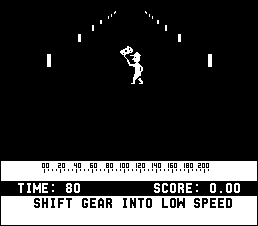 Midway introduces its own first-person car racing arcade game, Datsun 280 ZZZAP! (with permission from Datsun for the product placement, a video game first).
Midway introduces its own first-person car racing arcade game, Datsun 280 ZZZAP! (with permission from Datsun for the product placement, a video game first).
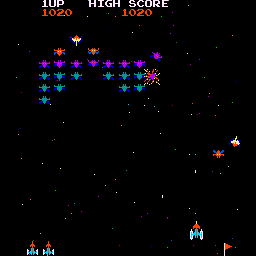 Arcade game maker Midway introduces the coin-op video game
Arcade game maker Midway introduces the coin-op video game 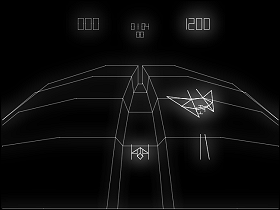 Cashing in on gamers’ desire to fly down a tightly-enclosed trench blowing away enemy spaceships, Cinematronics introduces the “Vectorbeam”-powered arcade game
Cashing in on gamers’ desire to fly down a tightly-enclosed trench blowing away enemy spaceships, Cinematronics introduces the “Vectorbeam”-powered arcade game 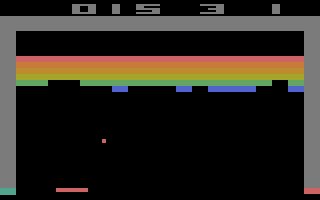 Atari releases the
Atari releases the 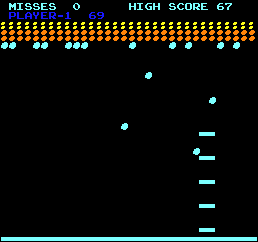 Atari releases the arcade game
Atari releases the arcade game 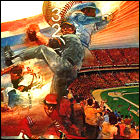 Atari releases the baseball cartridge
Atari releases the baseball cartridge 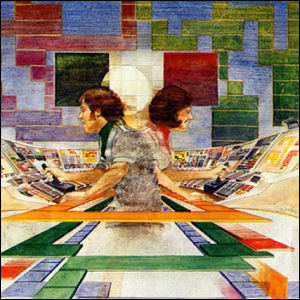 Atari releases
Atari releases